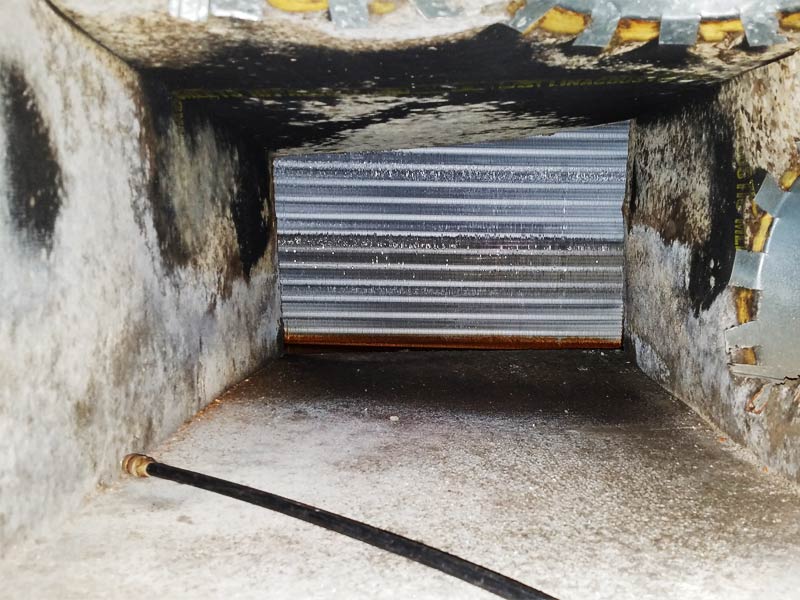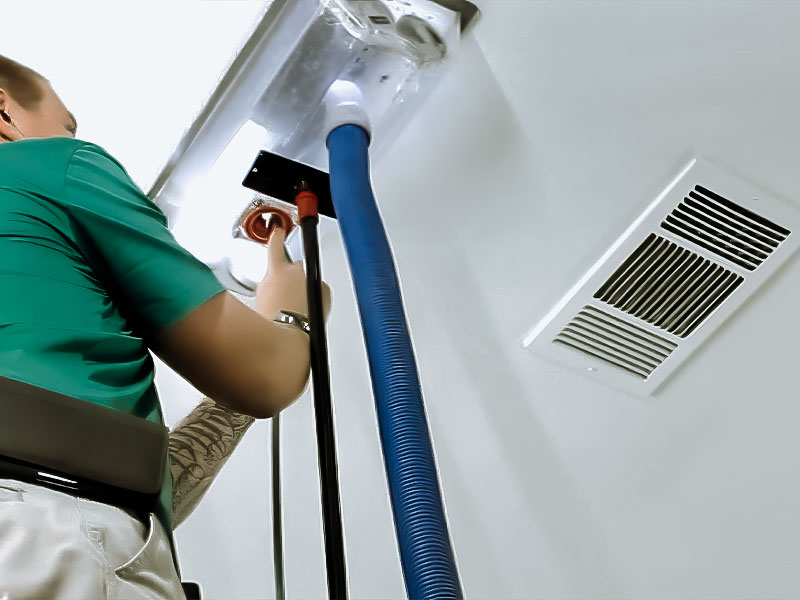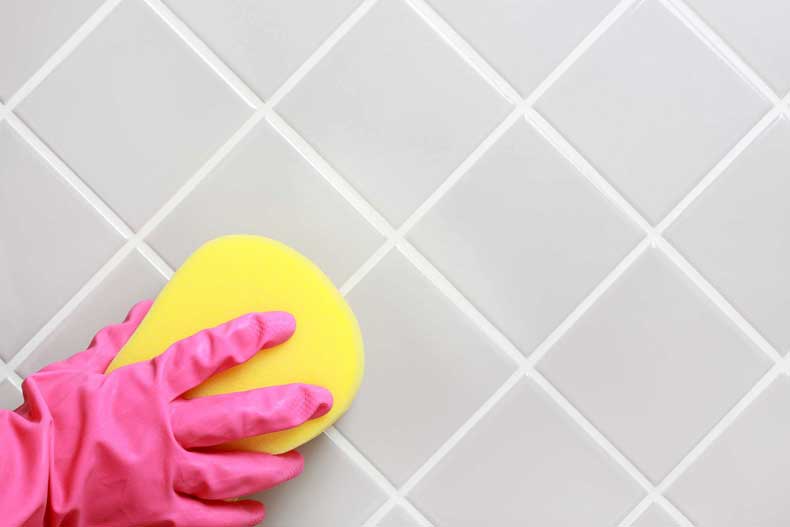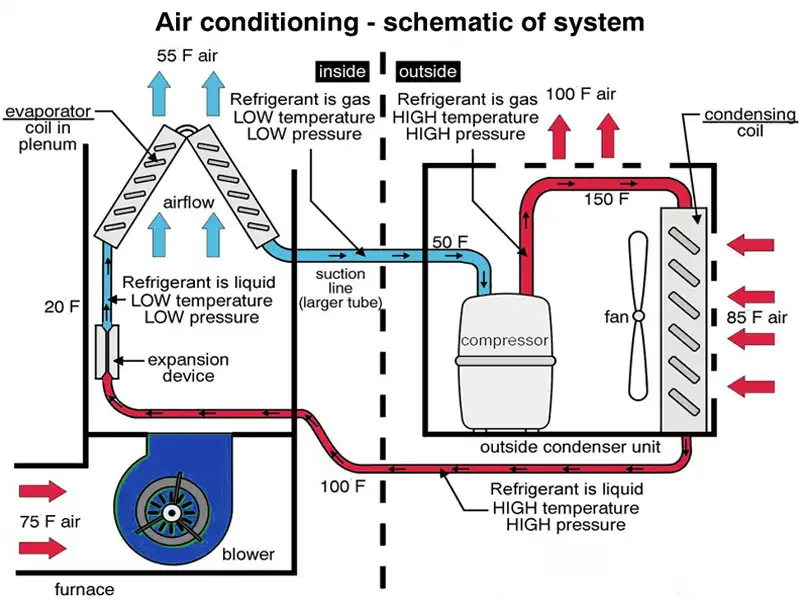Mold. It’s a four-letter word that can send shivers down any homeowner’s spine. Mold is a type of fungus that thrives in damp, dark environments. HVAC systems and ductwork provide the perfect breeding ground for mold, especially when moisture is present. It’s a sneaky, silent invader that can cause a host of health problems, from headaches and memory loss to respiratory issues and even death in extreme cases.
If you’ve ever taken a deep breath and smelled something musty, you might have a mold problem. Mold in HVAC systems and ductwork can be particularly troublesome, as it can spread spores throughout your home or office, causing health issues and unpleasant odors.
But what do you do if you suspect mold has infiltrated your HVAC system or ductwork? Let’s dive in and explore.
First things first, mold needs four things to grow: moisture, food, darkness, and a temperature above 60 degrees. If you can eliminate one or more of these factors, you can nip mold growth in the bud. But here’s the kicker: if you suspect mold in your home, don’t stick around to play detective. Get out and call in the experts.
Now, I’m not a scientist, and I don’t play one on TV, but I’ve sat through enough classes and earned enough certifications to know that air testing is a good place to start. But don’t just call the first heating and air company you find in the phone book. You need someone with experience, someone who knows what they’re doing, someone who takes mold as seriously as you do.
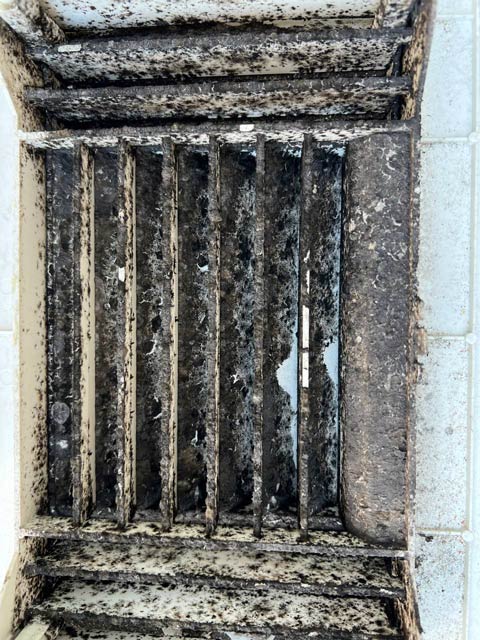
Signs of Mold in Your HVAC System
There are several signs that mold may be growing in your HVAC system or air ducts. These include:
- A musty odor coming from your air vents
- Visible mold growth on your air vents or around your HVAC system
- Increased allergy or asthma symptoms when the AC is running
- Decreased indoor air quality
If you suspect mold, it’s important to have a professional mold inspection and mold test conducted as soon as possible.
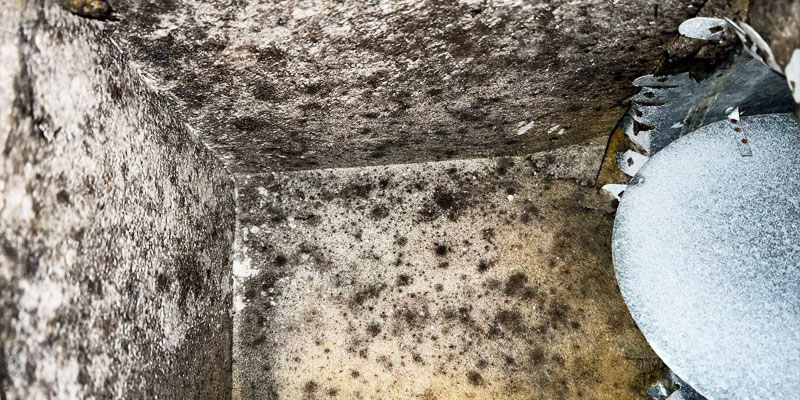
Testing for Mold
The first step in addressing mold in your HVAC system is to test for it. However, not all testing methods are created equal. It’s important to hire an experienced professional who knows what they’re doing. Air testing alone is not enough to determine the extent of the problem. A thorough inspection of your HVAC system and ductwork is necessary to locate the source of the mold.
If your home fails the test, it’s time to play hide and seek with the mold. You need to physically find it. Don’t just throw mud on the wall and hope it sticks. If the mold is in your ductwork, I’m going to let you in on a little secret: duct cleaning is not enough. No matter how good a company is, they can’t guarantee that every single mold spore has been eradicated.
Now, here’s the rub: if you’ve got mold in air vents or HVAC system, there’s a chance it’s growing elsewhere too. So, call in a remediation company, someone who can check your attic, crawl spaces, closets, and even inside your walls.
Types of Mold in Air Ducts
There are many different types of mold that can grow in air ducts, but some of the most common include:
- Aspergillus
- Cladosporium
- Penicillium
- Stachybotrys chartarum (also known as black mold)
Each type of mold has its own unique characteristics and health risks, which is why it’s important to have a professional mold inspection conducted to determine the type of mold that is growing in your air ducts.
Air Duct Cleaning and Mold Removal in HVAC Systems
Now, if the mold is in your HVAC system, you can have it cleaned and treated. You need a qualified HVAC and air duct cleaning contractor, someone who knows the ins and outs of your system. If the mold is in your ductwork, it’s important to understand that air duct cleaning is not enough to eradicate the problem. My advice? In many cases, the best course of action is to replace the ductwork entirely.
Preventing Mold from Returning to the Air Ducts
Preventing mold growth in your HVAC system and air ducts is key to maintaining good indoor air quality. Once the mold has been found and remediated, it’s important to take steps to prevent it from coming back. There are three main products that most heating and air companies offer: filters, UV lights, and ionizers.
- Regularly change your air filters. Filters are your first line of defense against mold. High-efficiency air filters can help remove mold spores from the air, reducing the likelihood of mold growth. A four-inch filter with a MERV rating of at least 11 is recommended.
- UV lights are like the superheroes of your HVAC system, killing mold and keeping your system clean.
- Ionizers ionize the air, killing mold and keeping your home safe.
Control Humidity Levels in Your Home
Mold thrives in humid environments, so it’s important to control the humidity in your home. If you’ve got mold, you’ve got humidity. And if you’ve got humidity, you’ve got a problem. Address any water leaks or moisture problems immediately. A whole-home dehumidifier can help remove excess moisture from the air, making it harder for mold to grow.
Conclusion
Mold in HVAC systems and ductwork can be a nuisance, but with regular inspections and proper maintenance, you can keep your home or office mold-free. By taking steps to prevent mold growth in your HVAC system, you can maintain good indoor air quality and protect your health. Remember, when in doubt, consult a professional for an accurate assessment and effective remediation strategies. After all, an ounce of prevention is worth a pound of cure!
